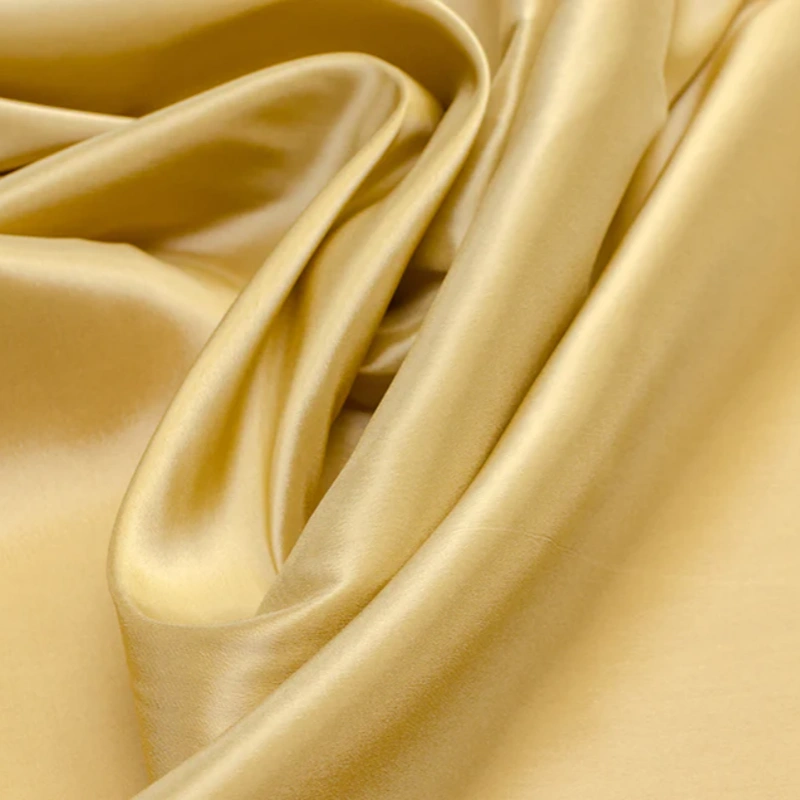So, is acetate fabric sustainable or just another trend? You might notice that acetate is popping up in more eco collections, and there’s a reason for that. The acetate yarn market is booming, with a value of about $2.5 billion in 2024, and it’s expected to hit $4.1 billion by 2033.
This growth comes from your demand for eco and high-performance textiles. Acetate fabric comes from renewable wood pulp, and it’s biodegradable, which sounds great for the planet.
Still, you should stay alert—some manufacturing processes use energy and chemicals that impact the environment. Check out how acetate and other fabrics compare in manufacturing energy:
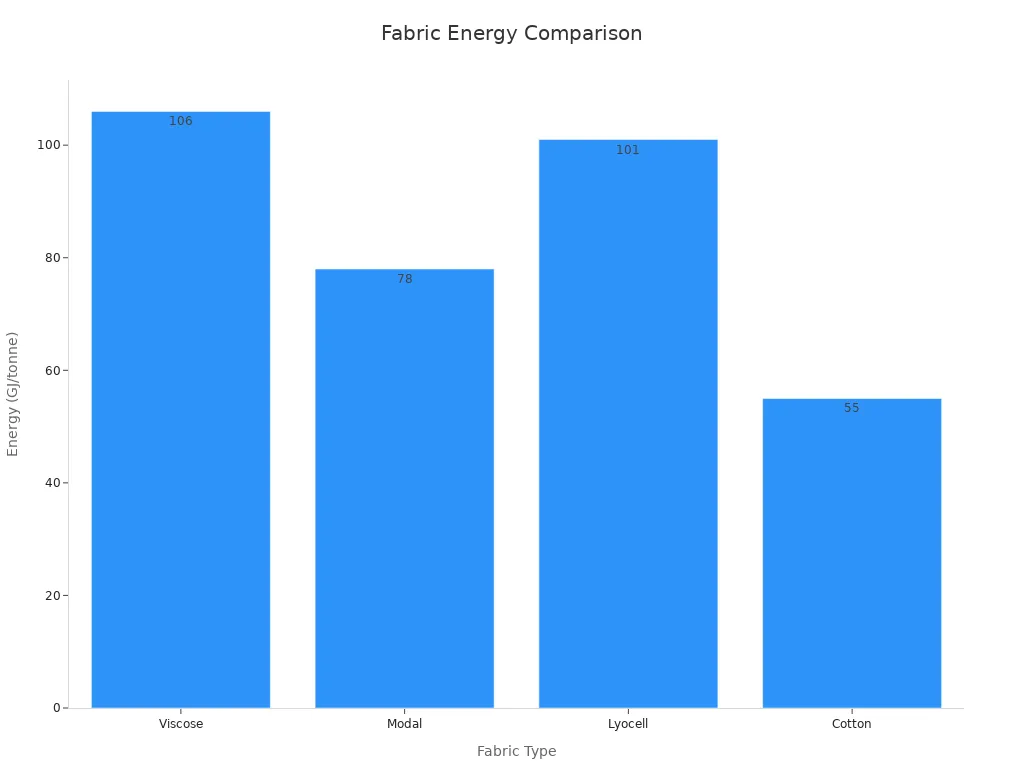
You deserve the facts, not just greenwashing. Let’s look closely at what makes acetate fabric truly eco and sustainable.
Key Takeaways
Acetate fabric comes from renewable wood pulp and is biodegradable, making it a more eco-friendly option than many synthetic fabrics.
The production of acetate uses chemicals and energy, so choosing acetate made with sustainable methods and certified sources helps reduce environmental impact.
Acetate fabric breaks down faster in compost than in nature, and recycling options exist but are less common than for other fabrics.
Look for brands that share clear information about their materials, production, and recycling to avoid greenwashing and make informed choices.
Choosing acetate from eco-conscious brands supports a balance of style, performance, and sustainability for a greener wardrobe.
Acetate Fabric Basics
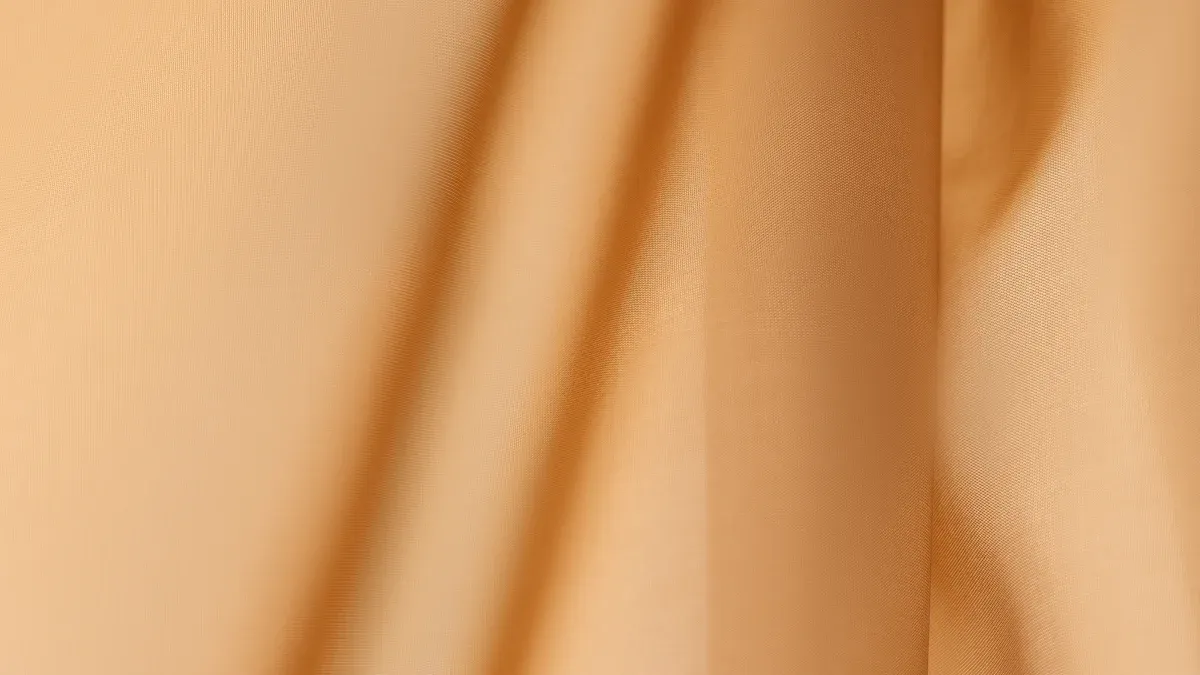
What Is Acetate Fabric
You might see acetate fabric in everything from linings to wedding dresses. This material comes from cellulose acetate, which is made by treating wood pulp with chemicals.
Acetate fabric stands out because it feels soft, looks shiny, and drapes well. You get a fabric that is smooth and lightweight, almost like silk, but usually at a lower price.
Acetate fabric belongs to the family of semi-synthetic fibers. It is different from rayon, even though both start with wood pulp. The main difference comes from the chemicals used. Acetate uses acetic acid, which gives it unique properties. You will notice that acetate fabric dries quickly, breathes well, and feels cool against your skin.
It is also thermoplastic, so you can shape it with heat. Many brands use it for satins, brocades, and taffetas. You will often find it in linings, loungewear, and even as a silk alternative.
Tip: Acetate fabric goes by many trade names, such as Acele, Avisco, Celanese, and Estron. If you see these on a label, you are looking at cellulose acetate.
How It’s Made?
Acetate fabric starts with cellulose acetate, which comes from wood pulp. Manufacturers treat the pulp with acetic acid and other chemicals to create cellulose acetate flakes. They dissolve these flakes and spin them into fibers. The process gives you a fabric that is soft, glossy, and easy to dye.
Here’s a quick look at how adding different particles can change the properties of cellulose acetate:
Property / Composition | Pure Cellulose Acetate (CA) | CA + 1% micro-TiO2 | CA + 2% nano-TiO2 |
|---|---|---|---|
TiO2 Content (wt%) | 0 | 1 | 2 |
Tensile Strength (MPa) | 46.8 | 54.7 | 81.7 |
Contact Angle (°) | 61.3 | 53.2 to 29 | 51.5 to 27 |
Transparency | Almost transparent | Less transparent | Efficient light blocking |
You can see that adding micro- or nano titanium dioxide (TiO2) boosts strength and changes how the fabric handles light and water. This means acetate fabric can be engineered for different uses, from fashion to technical textiles.
Acetate fabric production uses chemicals like sodium acetate, which has a lower environmental impact than many alternatives. Still, you should know that the process requires careful handling to keep emissions and water use in check. Regulations help make sure that the chemicals used in making cellulose acetate are safer for you and the planet.
Is Acetate Fabric Sustainable?
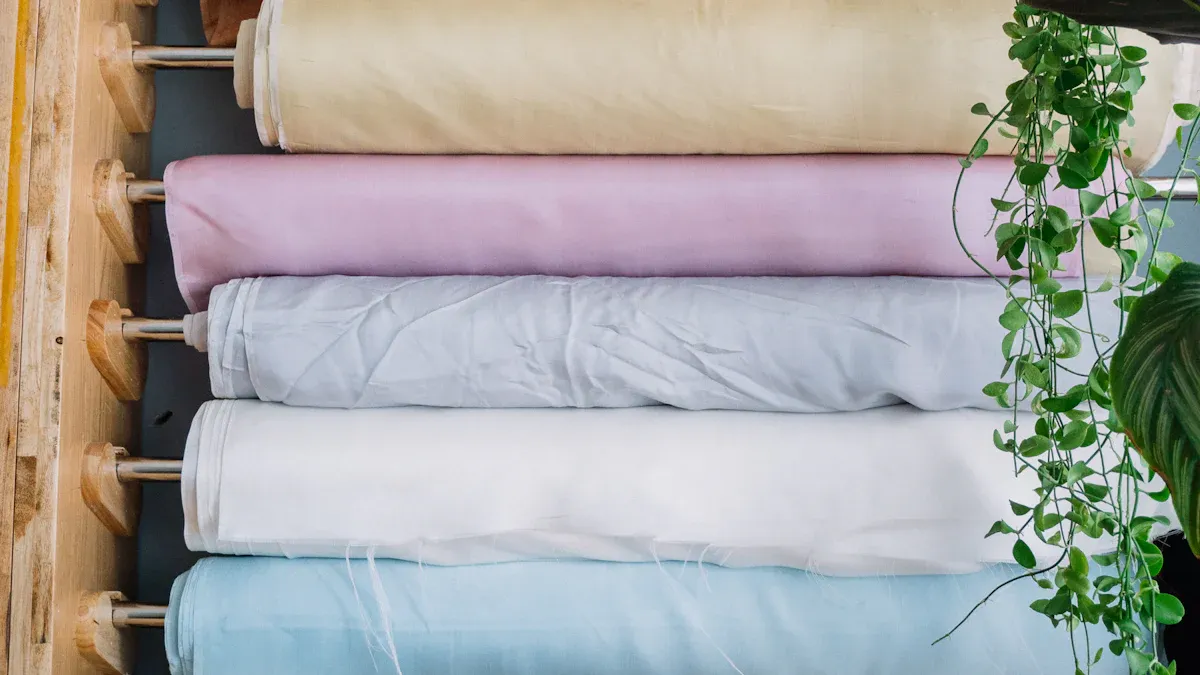
When you ask, “Is acetate fabric sustainable,” you want more than a simple yes or no. The answer depends on how you look at the whole story—from the raw materials to what happens after you toss your clothes. Let’s break it down.
Biodegradability
Acetate fabric comes from plant-based cellulose, so you might expect it to break down easily. In fact, biodegradability is one of the main reasons people call acetate an eco-sustainable material.
Scientists use special tests like ISO 14855 and ASTM D6691 to check how fast acetate breaks down in different places—compost, soil, water, and even the ocean. These tests measure things like how much carbon dioxide is released or how much oxygen is used up.
Here’s what happens in the lab and in the real world:
Condition | Biodegradation Metrics | Key Influencing Factors and Notes |
|---|---|---|
Controlled Laboratory (Simulated Aqueous Environments) | – 5-10% weight loss in the first month (RT to 60°C) | – Weight loss mainly due to deacetylation releasing acetic acid |
– 10-30% acetate groups lost in 1-3 months | – Degree of substitution (DS) critical; DS < 2 enhances biodegradation significantly | |
– Composting tests: 73-78% mineralization in 24-60 days | – Higher microbial populations and elevated temperatures (~53°C) in compost accelerate biodegradation | |
Real-World Natural Environments | – Slower deacetylation and biodegradation expected | – Lower microbial populations (several orders of magnitude less than compost) |
– Variable and generally lower temperatures | – Environmental variability and unknown conditions make exact statistics unavailable | |
– Microbial effects not directly studied in retrieved data | – Degradation rates likely reduced compared to lab due to less favorable conditions |
You can see that acetate fabric breaks down much faster in compost than in nature. In a compost bin, you might see up to 78% of the material turn into minerals in just two months.
In the wild, it takes longer because there are fewer microbes and lower temperatures. Still, compared to many synthetics, acetate is much more eco-sustainable.
Recyclability
You might wonder about recyclability when you think about is acetate fabric sustainable. The truth is that recycling acetate fabric is possible, but not as common as recycling cotton or polyester.
Some companies are working on ways to recycle cellulose acetate, especially in industries like eyewear and packaging. These efforts help reduce waste and support a circular economy.
A big review of 45 studies on textile waste shows that recycling and reusing fabrics make a huge difference in the environment. When you keep acetate fabric in use longer or recycle it, you cut down on pollution and save resources.
If you want to make the most eco-friendly choice, look for brands that offer take-back programs or use recycled acetate in their products.
Environmental Impact
Now, let’s talk about the bigger picture. Is acetate fabric sustainable when you look at the whole life cycle? You need to consider everything—from growing the trees to making the fabric, wearing it, and finally, what happens when you throw it away.
A cradle-to-gate life cycle assessment (LCA) on cellulose acetate shows that most of the energy and pollution comes from making the fibers, especially when using fossil fuels for chemicals like ethanol.
Another LCA compared regular acetate to bio-acetate (which uses more renewable ingredients). Bio-acetate had a lower carbon footprint and was fully biodegradable, making it a more eco-sustainable material.
Here’s a quick look at some of the chemicals and emissions involved in making acetate fabric:
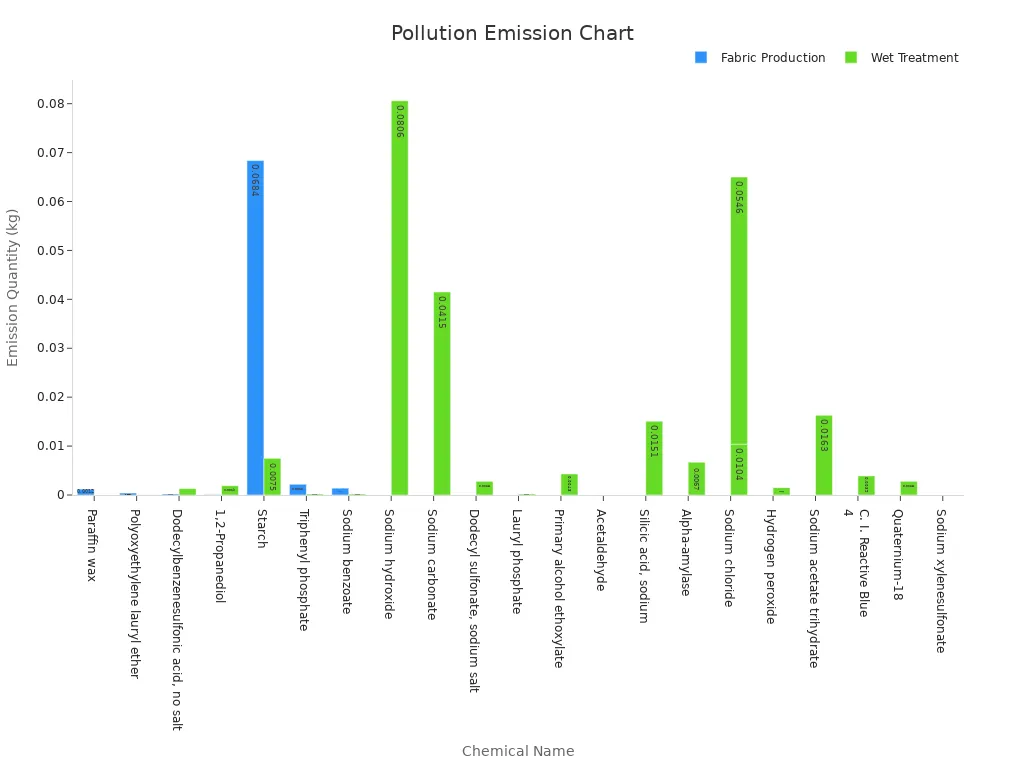
Process Segment | Chemical Name | Emission Quantity (kg) |
|---|---|---|
Fabric Production | Paraffin wax | 0.0012 |
Fabric Production | Polyoxyethylene lauryl ether | 0.0004 |
Fabric Production | Dodecylbenzene sulfonic acid, no salt | 0.0002 |
Fabric Production | 1,2-Propanediol | 0.0001 |
Fabric Production | Starch | 0.0684 |
Fabric Production | Triphenyl phosphate | 0.0022 |
Fabric Production | Sodium benzoate | 0.0014 |
Wet Treatment | Sodium hydroxide | 0.0806 |
Wet Treatment | Sodium carbonate | 0.0415 |
Wet Treatment | Dodecyl sulfonate, sodium salt | 0.0028 |
Wet Treatment | Lauryl phosphate | 0.0002 |
Wet Treatment | Primary alcohol ethoxylate | 0.0043 |
Wet Treatment | Acetaldehyde | 0.000004 |
Wet Treatment | Silicic acid, sodium | 0.0151 |
Wet Treatment | Alpha-amylase | 0.0067 |
Wet Treatment | Sodium chloride | 0.0104 |
Wet Treatment | Starch | 0.0075 |
Wet Treatment | Triphenyl phosphate | 0.0002 |
Wet Treatment | Sodium benzoate | 0.0002 |
Wet Treatment | Hydrogen peroxide | 0.0015 |
Wet Treatment | Sodium acetate trihydrate | 0.0163 |
Wet Treatment | C. I. Reactive Blue 4 | 0.0039 |
Wet Treatment | Sodium chloride | 0.0546 |
Wet Treatment | Quaternium-18 | 0.0028 |
Wet Treatment | Dodecylbenzene sulfonic acid, no salt | 0.0013 |
Wet Treatment | 1,2-Propanediol | 0.0019 |
Wet Treatment | Sodium xylene sulfonate | 4.66 × 10⁸ |
Some chemicals, like sodium hydroxide and triphenyl phosphate, have higher impacts on environmental protection. Wet treatment steps add more to ecotoxicity than the fabric production itself. Even though some chemicals are used in small amounts, they can still affect the environment.
A study on cellulose acetate packaging waste also measured the carbon footprint for different waste management options. Collecting acetate with organic waste or recycling it can lower its global warming impact. This shows why it’s important to think about the whole life cycle when you ask, “Is acetate fabric sustainable.”
If you want to support environmental protection, look for acetate fabric made from sustainable sources and manufactured sustainably. Brands like Friendtex focus on quality control and eco-sustainable practices, helping you choose a more sustainable material for your wardrobe.
So, is acetate fabric sustainable? It can be, especially when you consider its plant-based origins, biodegradability, and the push for better recycling.
But you need to look at the full picture, including how it’s made and what happens at the end of its life. When you choose acetate from eco-sustainable brands, you help protect the environment and support a more sustainable future.
Is Acetate Eco-friendly?
Lower-Impact Material Options
You want to know if acetate is eco-friendly. The answer depends on how you compare it to other fabrics and what you look for in a lower-impact material. Acetate comes from wood pulp, so it starts with a renewable resource.
When you choose acetate made from certified forests, you support better forest management. Some brands use closed-loop systems to recycle water and chemicals, which makes acetate a lower-impact alternative to many synthetics.
If you want a lower-impact material, look for acetate that is labeled as eco-sustainable. This means the fabric was made with less water, fewer chemicals, and more care for the environment.
You can also check for certifications like FSC or OEKO-TEX. These labels help you find eco-sustainable material that is safer for you and the planet.
Tip: If you want to make an environmentally friendly choice, ask brands about their sourcing and production methods. Transparency is key!
Comparison to Other Fabrics
Let’s see how acetate stacks up against other fabrics. You might wonder if it is really a lower-impact material or just another trend. Here’s a quick table to help you compare:
Fabric | Source | Biodegradable | Recyclable | Eco Impact |
|---|---|---|---|---|
Acetate | Wood pulp | Yes | Sometimes | Medium |
Polyester | Petroleum | No | Yes | High |
Cotton | Plant | Yes | Yes | Medium-High |
Lyocell | Wood pulp | Yes | Yes | Low |
Acetate is more eco than polyester because it breaks down faster and comes from plants. It is not as low-impact as lyocell, which uses a closed-loop process and fewer chemicals.
Cotton is natural and biodegradable, but it uses a lot of water and pesticides. When you want a lower-impact alternative, acetate can be a smart pick, especially if you choose eco-sustainable options.
You can see that no fabric is perfect. If you want to lower your impact, focus on how the material is made and what happens at the end of its life. Acetate gives you a balance between performance and eco benefits.
Spotting Greenwashing
Marketing Claims
You see a lot of brands calling their acetate fabric “eco-friendly” or “green.” Sometimes, these claims sound great but do not tell the whole story.
You might notice words like “natural,” “biodegradable,” or “kinder to the environment” on tags and websites. These phrases can be confusing if you want to make a real difference with your choices.
Greenwashing happens when companies use vague or misleading claims to make products seem better for the planet than they really are. For example, a label might say “eco” without any proof or details. Some brands use green colors or leaf logos to give you the idea of sustainability, even if their process has not changed.
How can you spot greenwashing? Look for these signs:
Claims that use buzzwords but do not explain what they mean.
No clear proof or data to back up the green claims.
Only positive information, with no mention of challenges or areas for improvement.
Marketing that focuses on one small “green” feature while ignoring bigger impacts.
When you see detailed, honest information about how a product is made, you can trust it more. Brands that share facts about their materials, workers, and even their problems show real transparency.
What Makes Acetate Truly Sustainable
You want to know what sets truly sustainable acetate apart from the rest. It comes down to the full story behind the fabric. Here’s what you should look for:
Check where the raw materials come from. Responsible brands use wood pulp from certified forests or even recycled sources.
Ask about the chemicals and energy used in production. The biggest environmental impact often comes from making acetic anhydride, a key ingredient.
Look for brands that share data about their energy use, water consumption, and waste. Reliable companies use on-site measurements and follow international standards.
See if the brand uses new technology or better methods, like closed-loop systems or digital monitoring, to lower their impact.
Trust brands that provide full lifecycle assessments and clear, honest reports. They should talk about both their successes and the challenges they face.
A truly sustainable acetate fabric is one that is made with care at every step, from the forest to your closet. When you see brands sharing real data and being open about their journey, you know you are making a better choice.
Conclusion
You now know that acetate fabric offers some real eco-benefits, but you should not rely on trends or simple labels. If you want to respect the environment and support sustainable lifestyles, keep these tips in mind:
Look for acetate made from sustainably managed forests.
Ask brands about their full life cycle and end-of-life plans.
Remember, LCAs and indexes like the Higg MSI have limits and may miss key impacts.
Choose suppliers with strong sustainability policies.
Smart choices help you build a greener wardrobe.
FAQ
What makes acetate fabric different from polyester?
You get acetate from wood pulp, while polyester comes from petroleum. Acetate feels soft and breathes better. Polyester can shed microplastic fibers during washing, which may end up in oceans. Acetate breaks down faster and does not contribute to microplastics found in the Arctic.
Can acetate fabric come from sustainable sources?
Yes, you can find acetate made from wood grown in pefc-certified plantations. These forests follow strict rules to protect nature and support local communities. Always check labels or ask brands about their sourcing if you want a more eco-friendly option.
Does acetate fabric release microplastic when washed?
No, acetate fabric does not release microplastic fibers during washing. You can wash acetate clothing without worrying about adding to the problem of microplastics found in the Arctic or other remote places.
Is acetate fabric safe for sensitive skin?
You will likely find acetate gentle on your skin. It feels smooth and does not trap heat. Many people with sensitive skin choose acetate because it does not cause itching or irritation.
How do I care for acetate clothing?
You should hand wash acetate in cold water or use a gentle machine cycle. Avoid wringing or twisting. Hang your clothes to dry. This helps keep the fabric looking new and prevents damage.


